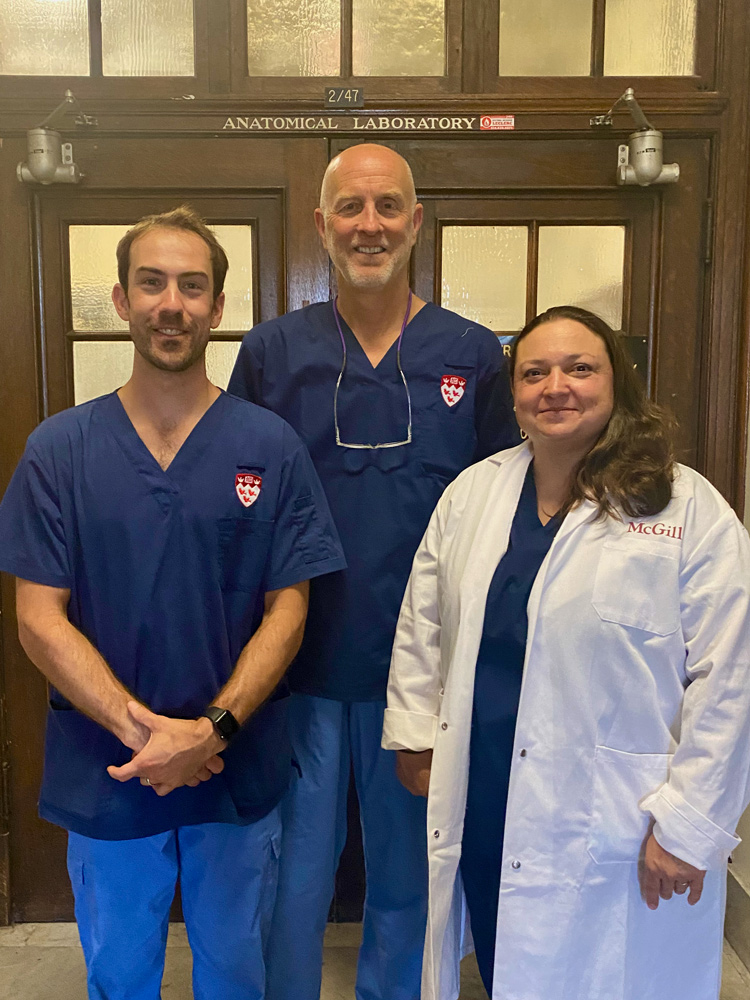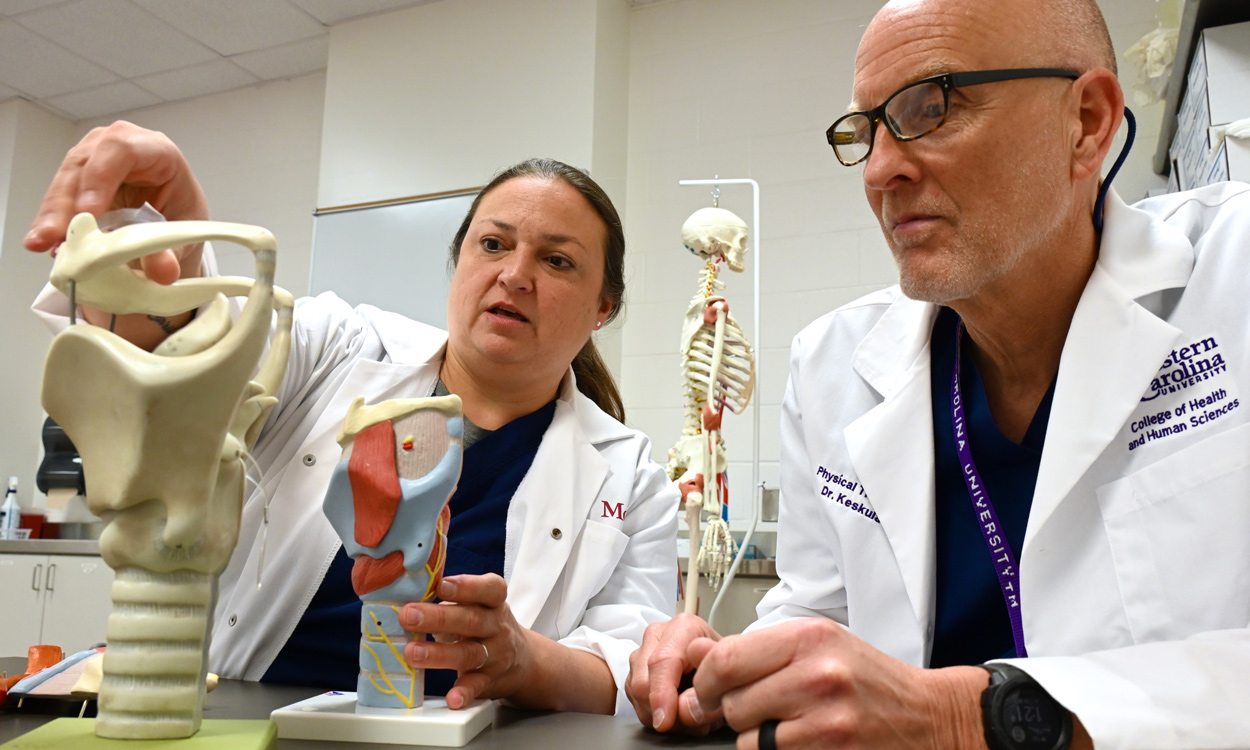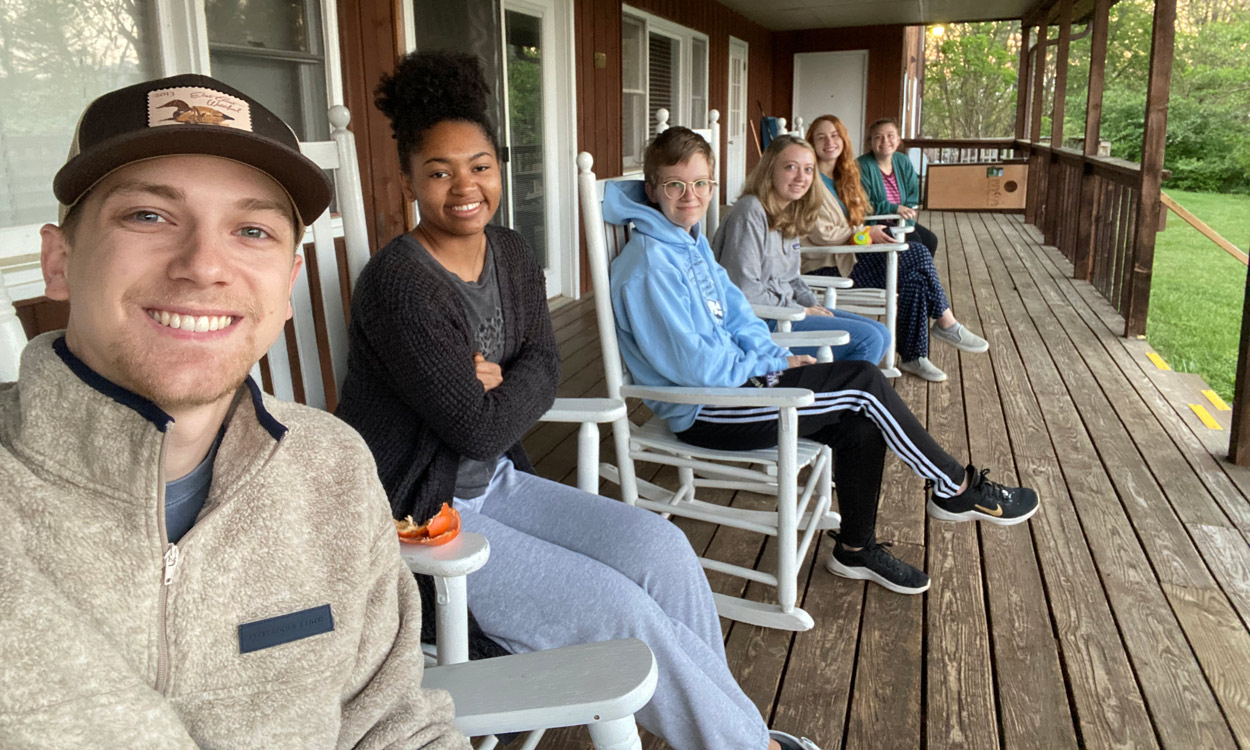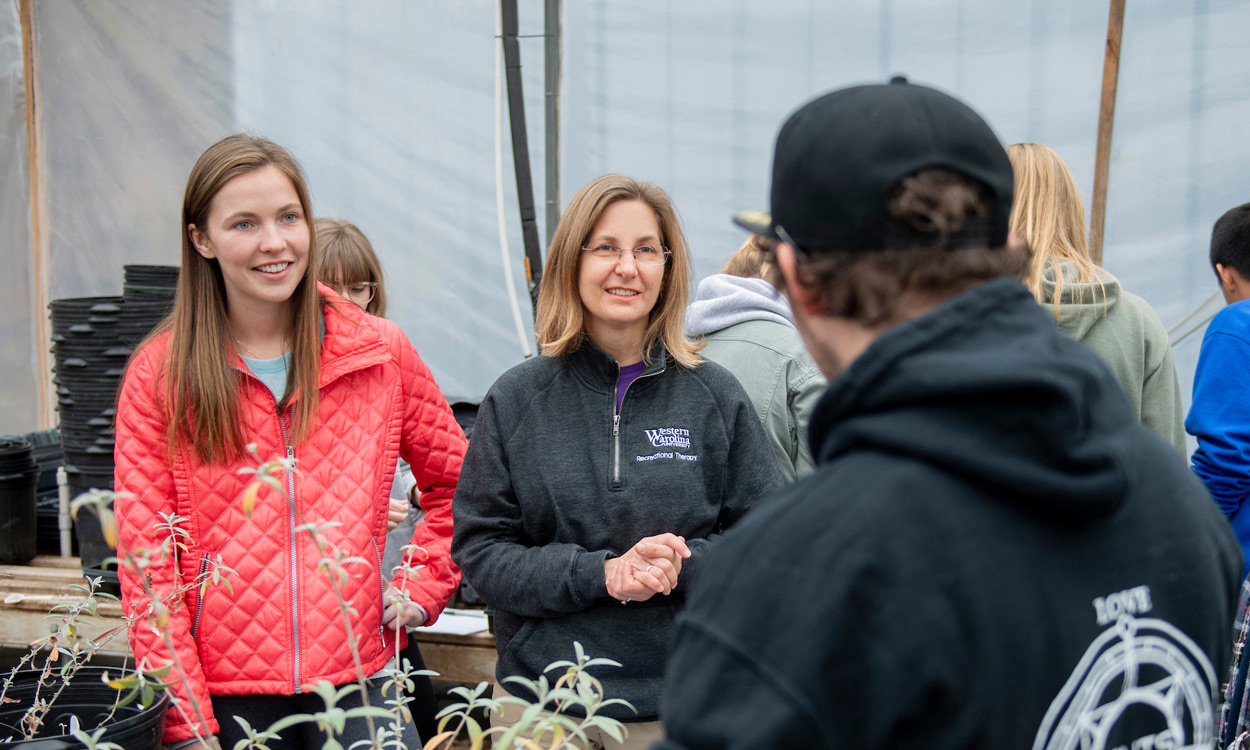Professors use dissection to improve anatomy education, collaboration
Doug Keskula (right), physical therapy professor, and Leigh Odom, speech-language pathology associate professor, traveled from WCU to Canada this summer for a dissection workshop to explore human anatomy together.
It was not the usual academic partnership when physical therapy professor Doug Keskula and speech-language pathology associate professor Leigh Odom traveled from Western Carolina University to Canada this summer for a dissection workshop to explore human anatomy together.
The five-day dissection at McGill University in Montreal included expert guidance from faculty member Gabriel Venne, an osteopath and associate professor of anatomical sciences.
As the dissection progressed, Keskula and Odom explored the anatomy of the head and neck and found themselves noticing different things about the structures they encountered. They shared those differing understandings about what various anatomical structures can mean for patient injuries, impairments and recoveries in their fields — and for student instruction in their classrooms.
“We looked at the same regions from a different perspective in terms of anatomy and function,” Keskula said. “The physical therapy focus was more on the muscular, nervous and circulatory systems related to movement, function and posture. The speech focus was more on the pharynx and larynx and smaller, subtle functions of voice and swallowing.”
That sharing of perspectives is exactly what Keskula, who organized their participation in the dissection workshop, had hoped for: A cross-discipline opportunity to form a deeper knowledge of anatomy for better inter-professional collaboration and improved student instruction in the College of Health and Human Sciences at WCU.
It was Keskula’s third dissection with Venne. McGill University offers a renowned human dissection program that supports educators and clinicians from around the world. “They’ve been a tremendous resource and a pleasure to work with,” Keskula said.

Gabriel Venne, Doug Keskula and Leigh Odom.
The dissection focused specifically on the head and neck. These are parts of the body commonly involved in the diagnosis and treatment of diseases and dysfunctions in the physical therapy and speech-language pathology fields.
“For me personally, out of all the courses I ever took, anatomy is probably still the most meaningful,” said Keskula, a professor, physical therapist, athletic trainer and former dean of WCU’s College of Health and Human Sciences. “That’s why I feel so fortunate to teach anatomy. It’s such a critical part of health science education. If you polled our students, many might say that it’s one of the most important courses.”
Anatomy is also a foundational subject for speech-language pathology, Odom said. The growing field serves patients of all ages and is about far more than helping children overcome struggles with articulation and pronunciation.
“We work on voice disorders, speech disorders, swallowing disorders, communication disorders. We work with patients who have oral cancers, cleft palates, traumatic brain injuries,” Odom said. “What is causing a disorder very often will come back to what anatomical structures are doing wrong and why.”
Keskula and Odom said the dissection workshop enhanced their understandings of human anatomy and how various medical professionals put anatomical knowledge to use in both clinical settings and classrooms.
“When I go back to class, to teaching anatomy or different pathologies or treatments and underlying problems, this dissection is really going to help me better shape my syllabi,” said Odom, who is director of the Department of Communication Sciences and Disorders. “Seeing firsthand the interconnectedness of all these anatomical structures will help me revamp how I approach things and communicate with students.”
Keskula said working with Venne and Odom improved his understanding of the complexities and clinical relevance of the head and neck anatomy. “This experience also expanded our dissection skills, which will enable us to better access and present these important anatomical structures for our students,” he said.
Keskula and Odom now plan to work with other faculty members and programs in the College of Health and Human Sciences to foster collaboration and provide more effective and clinically relevant anatomy instruction for students.
Venne said that’s the kind of collaboration McGill University wants to help facilitate with its clinical dissection program, which launched in 2017. The program relies on people who donate their bodies to science. Advanced embalming techniques are used to offer the most life-like tissues presently possible and a dissection that is similar to what a surgeon experiences during an operation.
“Health care professionals and academics looking over the same bodies with different perspectives and talking about how they can apply that knowledge to their daily practice is beneficial to patients, but also to students,” Venne said. “That’s what we want, to generate impactful moments, which is also the will of these donors.”


